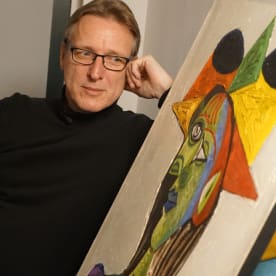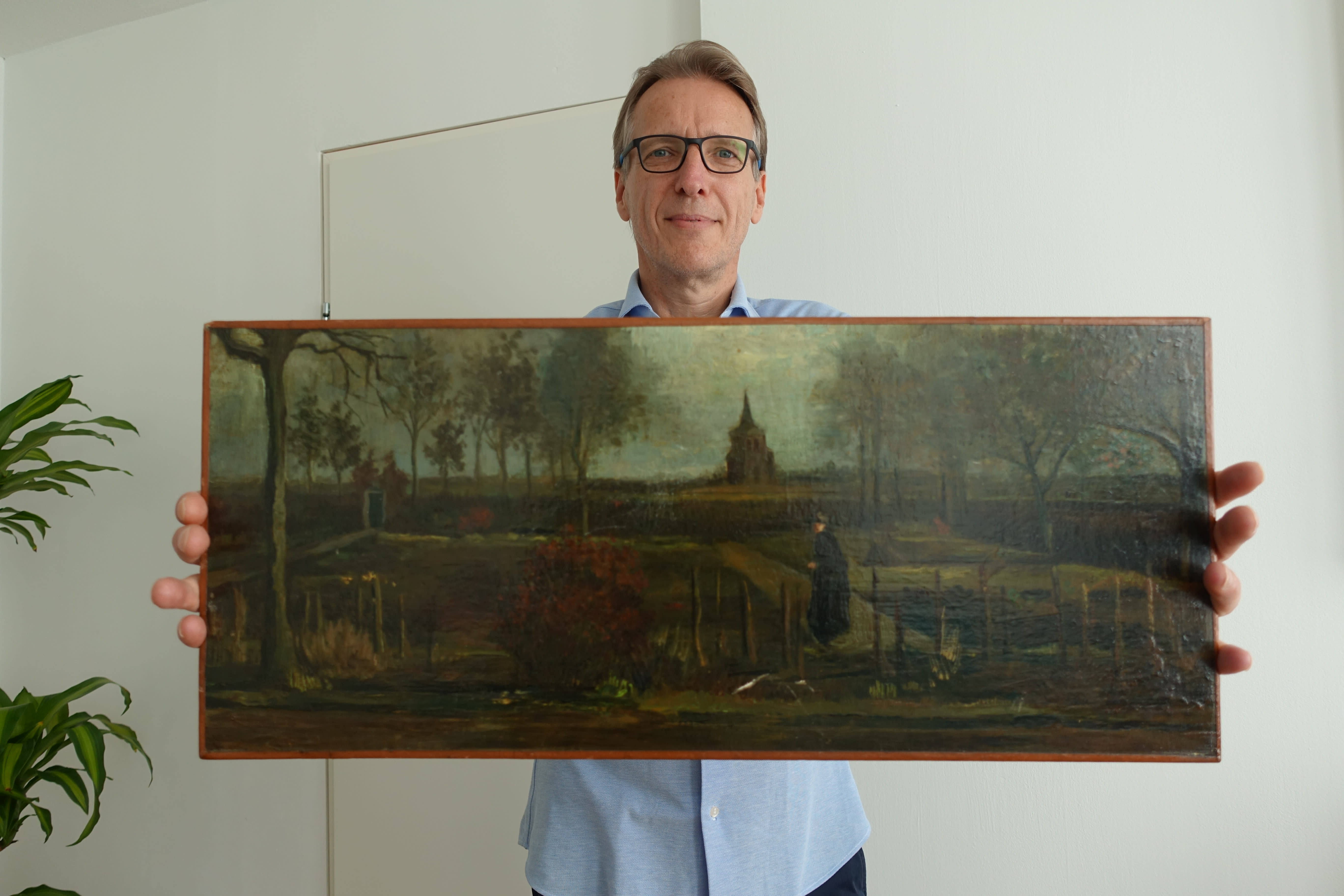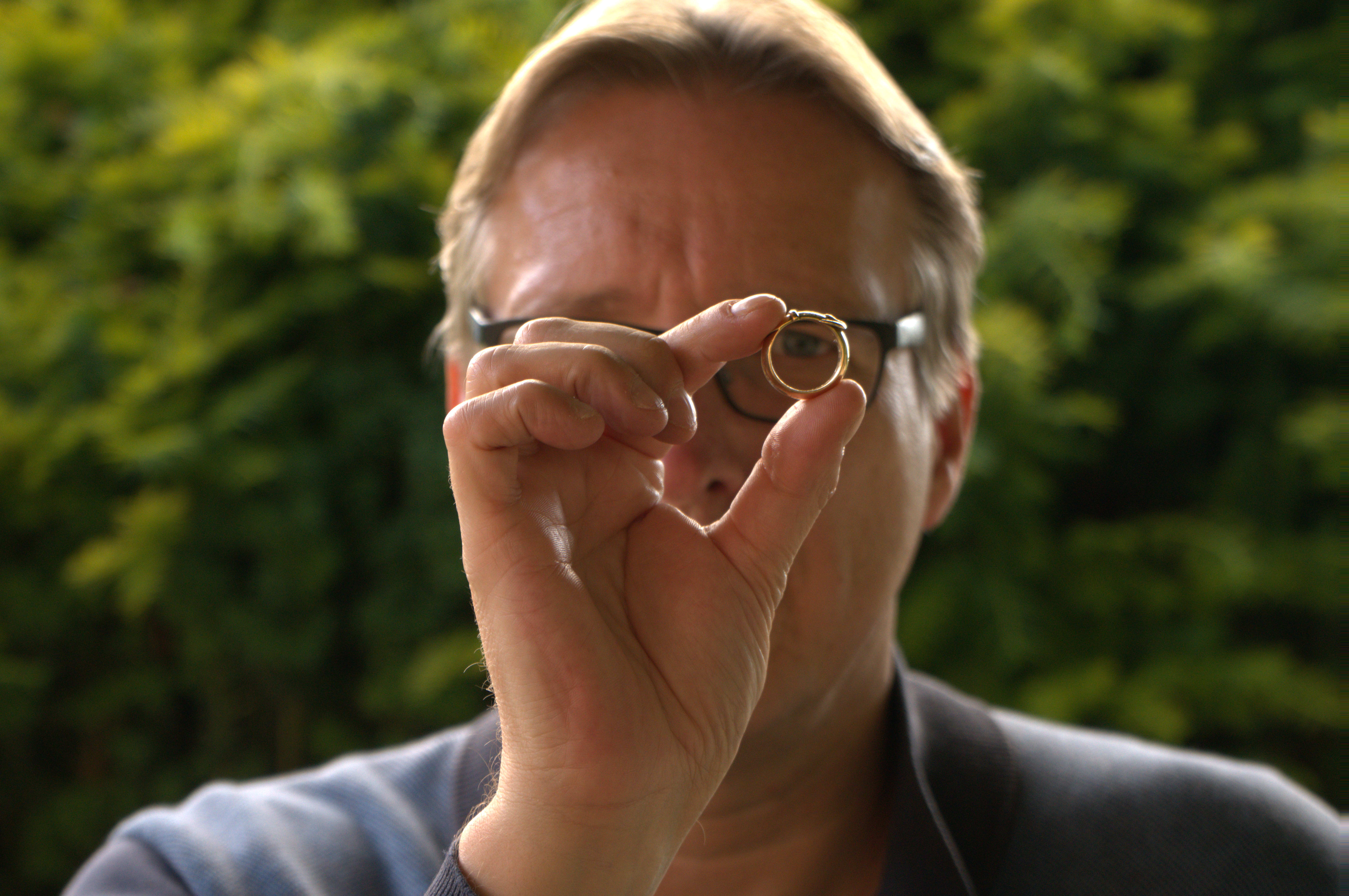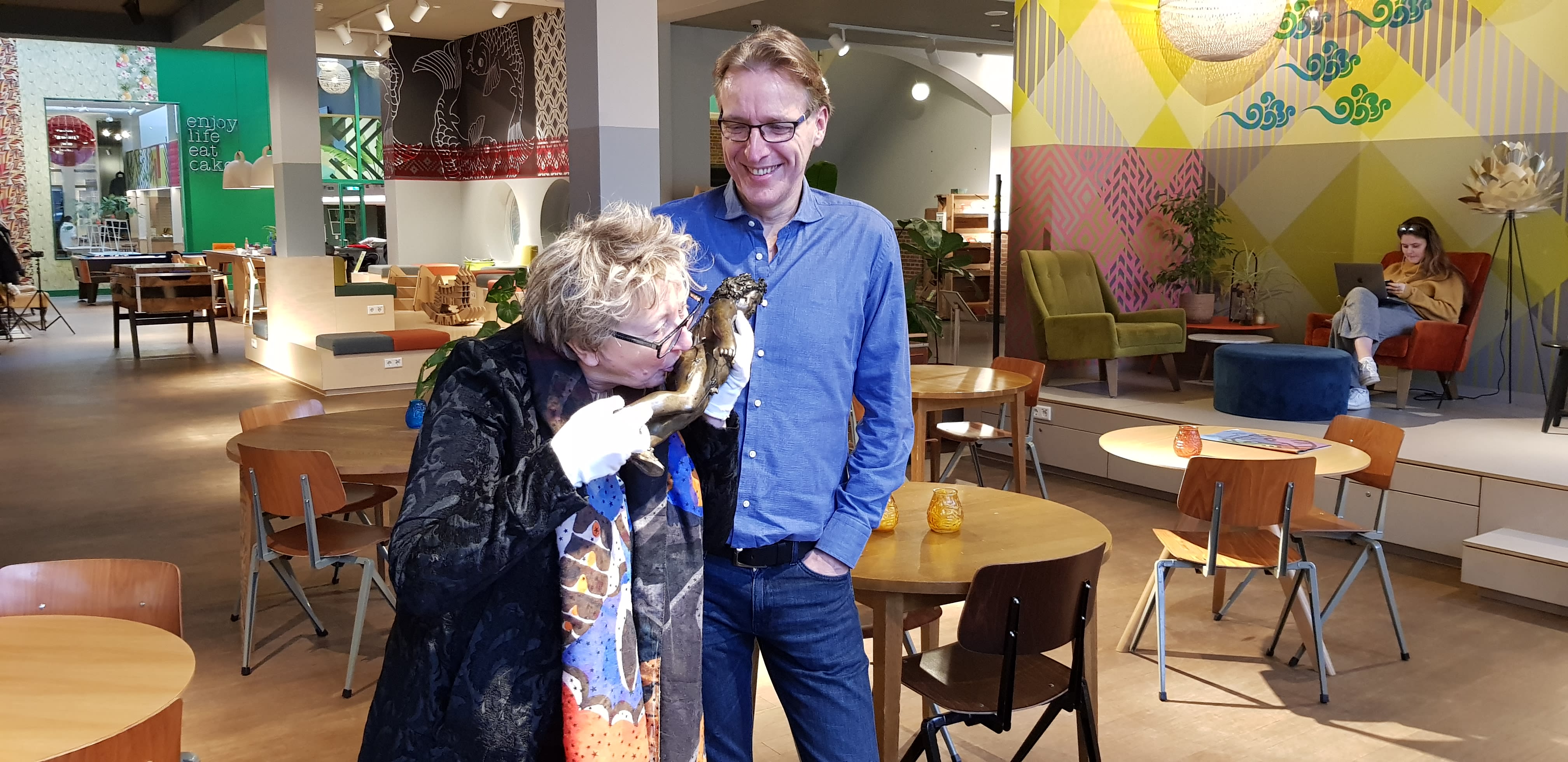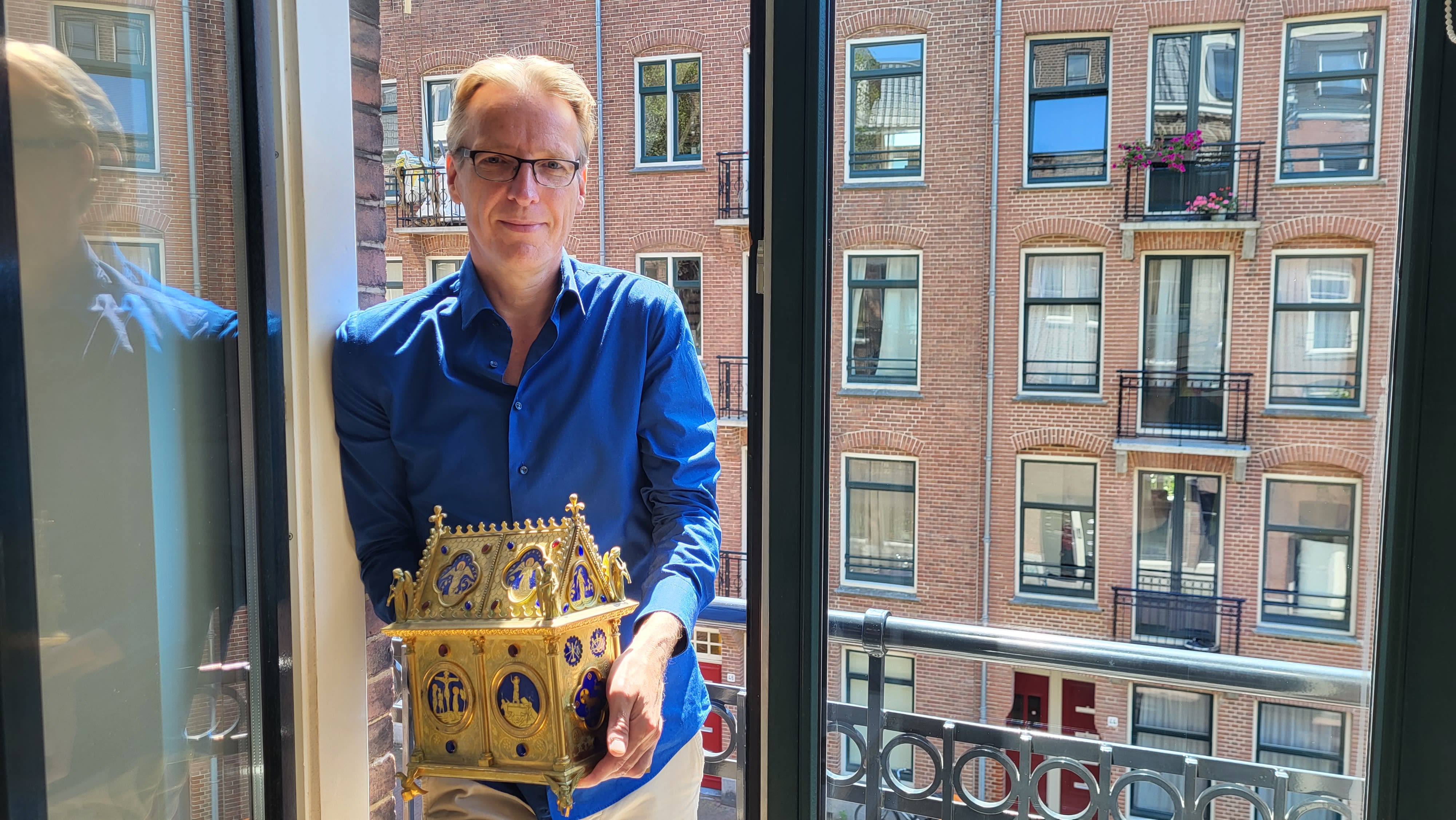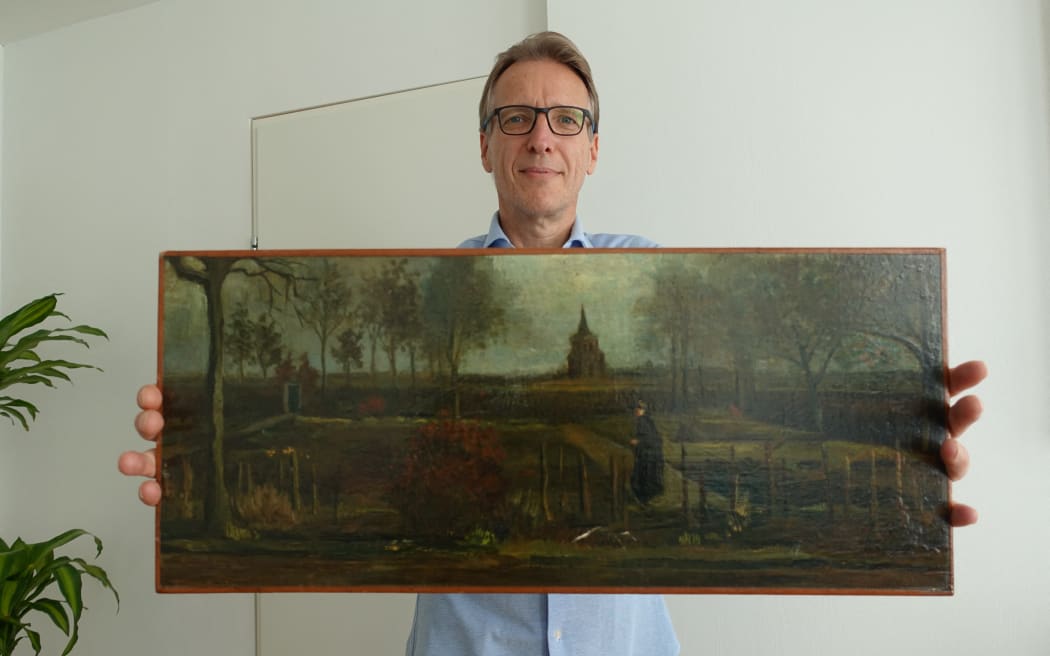
Dutch art detective Arthur Brand shows a portrait of him posing with the painting title "Parsonage Garden at Nuenen in Spring", painted by Vincent van Gogh in 1884. Photo: AFP PHOTO /Arthur Brand
Over three years ago a Van Gogh painting was stolen from a Dutch Museum, the thief was convicted and sentenced to prison in 2021 but the painting had changed hands by then.
Amsterdam based art detective Arthur Brand has spent decades tracking down stolen masterpieces, including Picassos, Van Goghs and missing artifacts such as Oscar Wilde's ring and the "Hitler's Horses".
Earlier this month, he was handed the painting - Parsonage Garden at Nuenen in Spring - in a pillowcase inside an Ikea bag.
Brand tells Saturday Morning's Kim Hill the story of how it was returned.
"The buyer turned out to be a drug lord who was already in jail for drug related cases and he had bought this painting to try to bargain it for a lesser sentence," Brand said.
It has happened - and worked - in the past, he said.
"But in the Netherlands we have figured out that if you agree to these deals, people will go tomorrow to the museum to steal something."
Because the drug lord could not bargain with the painting and anyone who touched it could go to prison and receive a fine in the millions, it was not worth anything anymore, Brand said.
"So our hope was that some day, somebody would step forward and say look, here it is, good luck with it, and let the police leave us alone'."
Finally, three weeks ago Brand received a message on What's App.
It said: "Mr Brand, are you bound to confidentiality?"
Brand told the anonymous sender he wasn't, but that he keeps his word.
The person replied and their message mentioned Parsonage Garden at Nuenen in Spring, the missing painting.
"And then I sat up straight in my chair, I thought well, here we go. So I asked him for a proof of life. A proof of life is a picture of the painting front and back with a newspaper from that same day so they could prove that they indeed had the painting in their possession."
Parsonage Garden at Nuenen in Spring has notes on the back of it that only the owner and thief would know about. They were there in the photo.
Brand said this was when the game started.
"It's a dangerous game. I'm a civilian, I have to obey the law and in my 50 years of career I've never stepped any step without consulting or corroborating or in coordination or with permission from the police."
Brand said because police had tracked down the thief, the middle man and the buyer, they were sure this person had nothing to do with the theft.
"Probably he has a criminal background but he was not guilty of this particular act."
In his job, Brand asks very little questions. He doesn't want to know someone's name or how they got an artwork.
"I don't care what has happened with the painting, I just want it in my hands."
Brand gained the confidence of the message sender and made a deal - the man would deliver the painting to his home.
"All these days of course I was sweating, waiting for him to come."
The police were informed but Brand said they decided not to interfere.
"I opened the door and there he was with an Ikea bag, blue...I also saw a pillow full of blood and I said 'what's that pillow' and he said 'well, I cut myself retrieving this painting'.
"So I hugged him and I said thank you so much."
Brand had been working on this case for three and a half years and said it was an important moment.
"It was one of the best moments of my life."
But it was not the first time he had recovered stolen artwork.
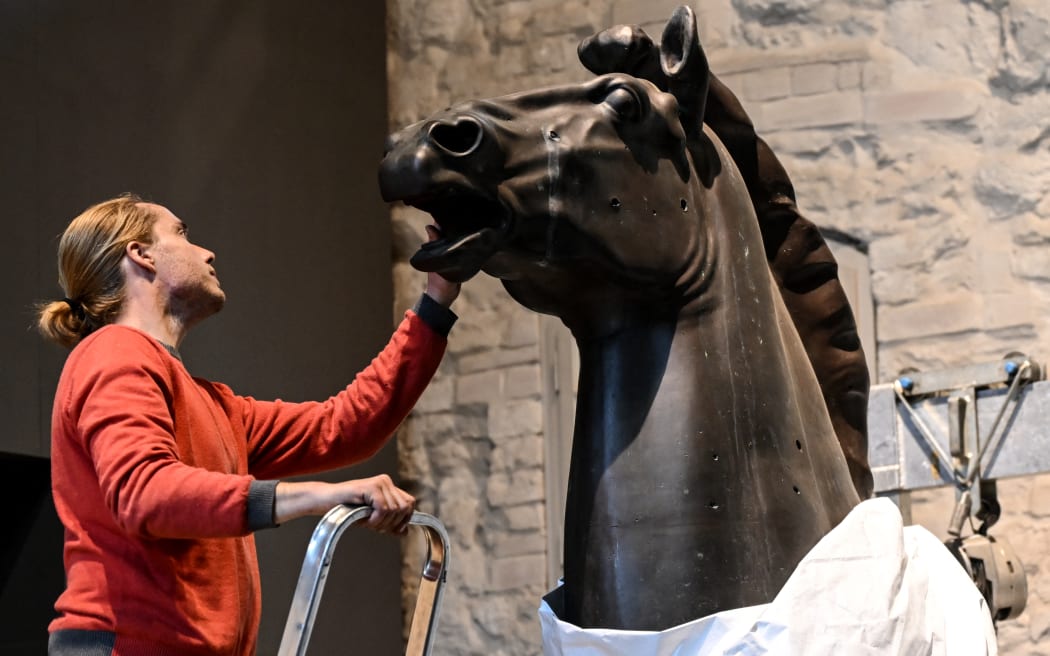
One of the Thorak horses is unpacked by restorer Franz Mahler at the Spandau Citadel. Photo: AFP / Britta Pedersen
[h] Hitler's horses
Hitler's favourite statues, by Nazi artist Josef Thorak, known as Hitler's horses, or Schreitende Pferde, were once believed destroyed in the war. That is of course, until Brand became involved in rediscovering them.
"Everybody thought them to be destroyed until...it's now eight years ago I got some pictures in colour. And to see these two horses in colour with two persons next to it with clothing from let's say ten years ago, those pictures could not originate from World War II...with that picture I started to believe that the horses might have survived the war."
Brand worked with the Geman police to find the trail.
"We found out that the horses had survived the war but were confiscated by the Russians and the Russians had hidden them on one of their army barracks, because Stalin loved Hitler's art too, you know, they were both dictators. Nazi art and Communist art is not that different."
When the Berlin Wall fell, the Russians, who had kept the statues hidden, sold them to some old Nazis in the west who hid them in a basement, Brand said.
They were then trying to sell them.
"We managed to track them down. We had encounters with old Nazis, with new Nazis, old spies from the KGB, from the Stasi...so it was once of the best adventures of our lives.
"That was my biggest case until today."

